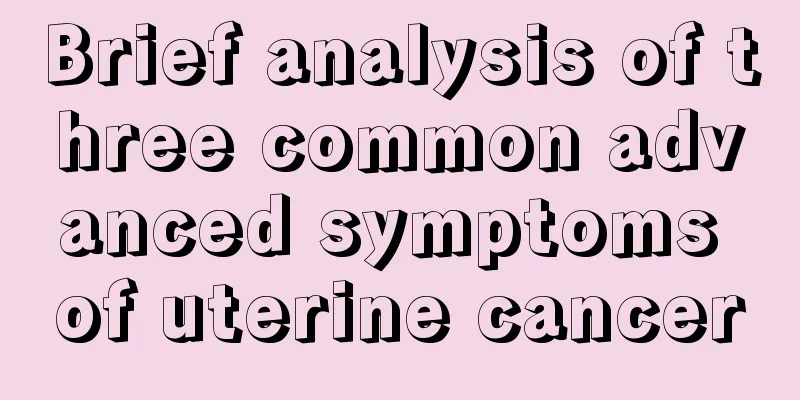Are there any sequelae after the hemorrhagic fever is cured?

|
Today's environmental pollution is very serious, so people's health is suffering. Hemorrhagic fever is a relatively common epidemic disease and is also very common in life. However, this disease can be cured through treatment. However, some people are worried about the sequelae and adverse effects. So, are there any sequelae after recovering from hemorrhagic fever? There is a high probability of sequelae after recovery from hemorrhagic fever, so good care must be taken. What are the complications of hemorrhagic fever? (1) Massive cavity bleeding and intracranial hemorrhage: Massive gastrointestinal bleeding can lead to shock, with a serious prognosis; massive hemoptysis can lead to suffocation; intracranial hemorrhage can cause sudden convulsions and coma. (ii) Heart failure and pulmonary edema: often seen in shock and oliguria, often with sudden onset in a short period of time, severe condition, and obvious signs of hypervolemia. (III) Adult respiratory distress syndrome (ARDS): It is more common in the hypotensive shock period and oliguria period. It is caused by pulmonary interstitial edema due to high pulmonary circulation pressure and changes in pulmonary capillary permeability after the shock is corrected or due to excessive fluid replacement. The patient has chest tightness, extreme breathing difficulty, dry and wet rales in both lungs, and blood gas analysis may show a significant decrease in arterial oxygen partial pressure. The prognosis is serious and the mortality rate is high. (iv) Secondary infection: The period from oliguria to polyuria is prone to complications such as pneumonia, urinary tract infection, sepsis and fungal infection. Causes Caused by the Hantavirus. 1. Host animals and sources of infection are mainly small rodents, including wild mice and house mice. 2. The main transmission route is animal-borne. The virus can be excreted through the blood, saliva, urine, and feces of host animals. Direct transmission from rats to humans is an important route of human infection. 3. Population susceptibility It is generally believed that the general population is susceptible, the latent infection rate is low, the incidence rate is generally high in young and middle-aged people, and there is lasting immunity after the disease treat 1. General principles: early detection, early rest, early treatment and on-site isolation and treatment. Report as a Class B infectious disease, closely monitor vital signs, and provide corresponding comprehensive treatment based on the clinical conditions of Stage V. During the fever period, physical cooling or adrenal cortex hormones can be used. When hypotensive shock occurs, blood volume should be replenished. Commonly used methods include low molecular weight dextran, fluid replacement, plasma, protein, etc. If there is oliguria, diuretics (such as furosemide, etc.) can be injected intravenously. In case of polyuria, adequate fluid and electrolytes (potassium salts) should be supplemented, mainly orally. After entering the recovery period, pay attention to preventing complications, strengthen nutrition, and gradually resume activities. 2. Symptomatic and complication treatment: Patients with obvious bleeding should receive fresh blood transfusion to provide a large number of normally functioning platelets and coagulation factors; patients with a significantly reduced platelet count should receive platelet transfusion; patients with disseminated intravascular coagulation can be treated with anticoagulants such as heparin. Patients with heart failure should use cardiotonic drugs; patients with renal oliguria can be treated as acute renal failure: limit fluid intake, use diuretics, maintain electrolyte and acid-base balance, and adopt dialysis therapy when necessary; patients with impaired liver function can be given liver protection treatment. Antibiotics may be used to prevent infection in critically ill patients as appropriate. Prognosis The mortality rate is as high as 20% to 90%. Patients with high viral load in the body and severe damage to major organs such as liver and kidneys have a poor prognosis. prevention Rat prevention and extermination are the key to eliminating this disease. Maintain good food, environmental and personal hygiene, and use hemorrhagic fever vaccine for preventive injection when necessary. |
<<: How long can one live with sequelae of myocarditis
>>: Sequelae of lymph node tuberculosis surgery
Recommend
The consequences of not treating nasal polyps
Nasal polyps are a very common disease in daily l...
There is a small bubble on the eyeball
Eyes are an important part of our facial features...
Why does my knee hurt?
Nowadays, adults, children and teenagers all have...
The difference between internal hemorrhoids and external hemorrhoids, it turns out there are these differences
Internal hemorrhoids and external hemorrhoids are...
Is lung cancer contagious? How long can one live with lung cancer?
Although lung cancer is a common cancer, it is no...
Can the nose be made smaller?
Nowadays, people have relatively high requirement...
How to use a microwave oven
With the gradual improvement of living standards ...
Which hospital should I go to if I have endometrial cancer
Everyone knows that endometrial cancer is a commo...
What to do if senior high school students are tired of studying
Senior year of high school is an important crossr...
How long is the incubation period of potato poisoning
Potatoes are very common food and their nutrition...
How to treat cervical cancer in its early stage? What are the abnormalities of cervical cancer in its early stage?
Cervical cancer is one of many types of cancer. I...
How to deal with ligament sprains? It turns out this is the way
Ligament sprain is a condition that people often ...
What are the treatments for glioma
Glioma is a brain tumor with a high incidence rat...
Will armpit hair grow more the more you shave?
Many female friends like to wear sleeveless cloth...
The survival period of pulmonary interstitial fibrosis is actually related to these
The incidence of pulmonary interstitial fibrosis ...









